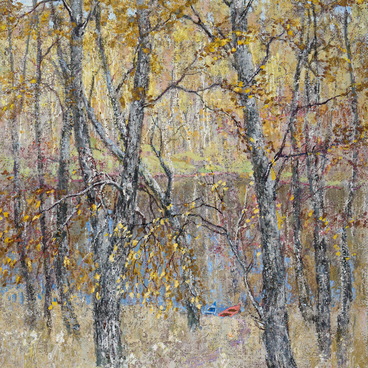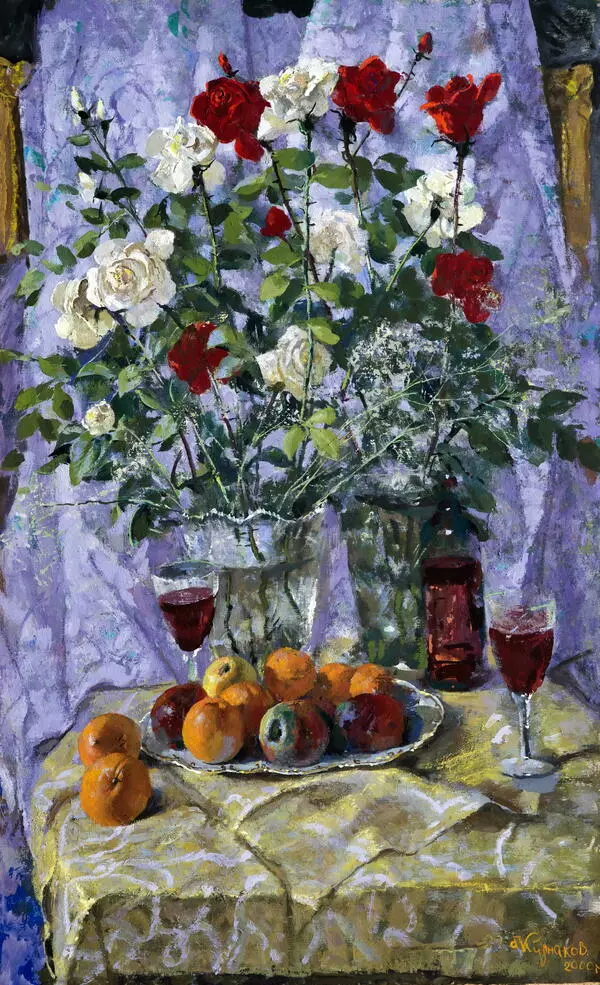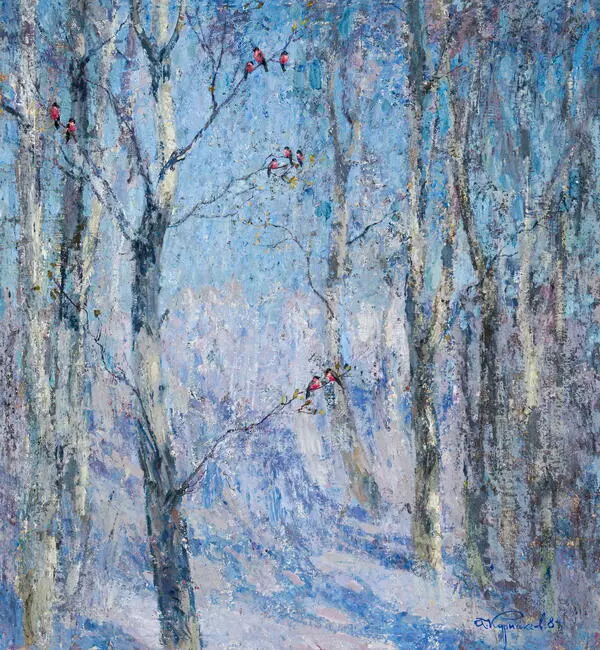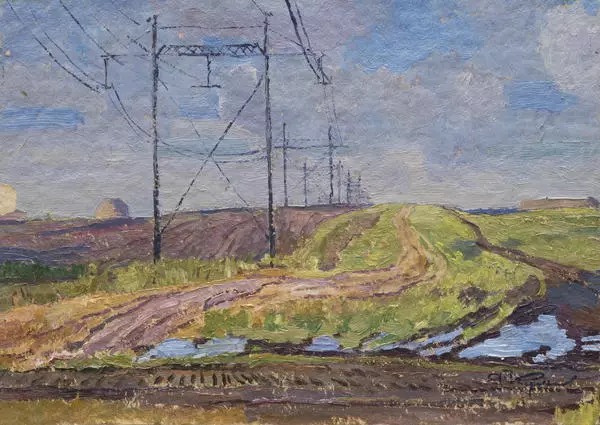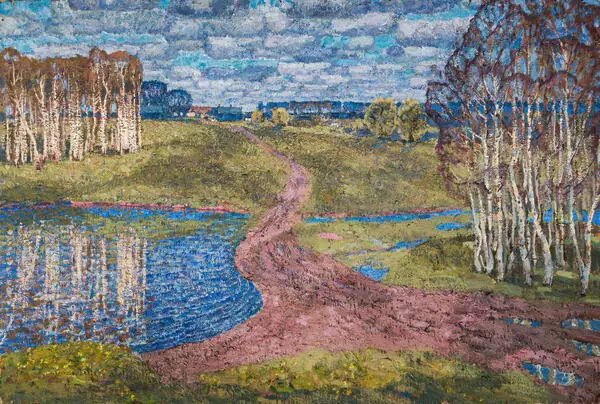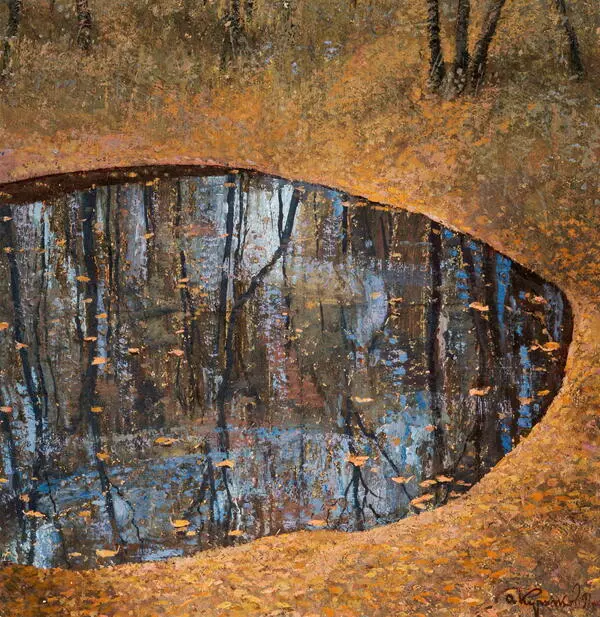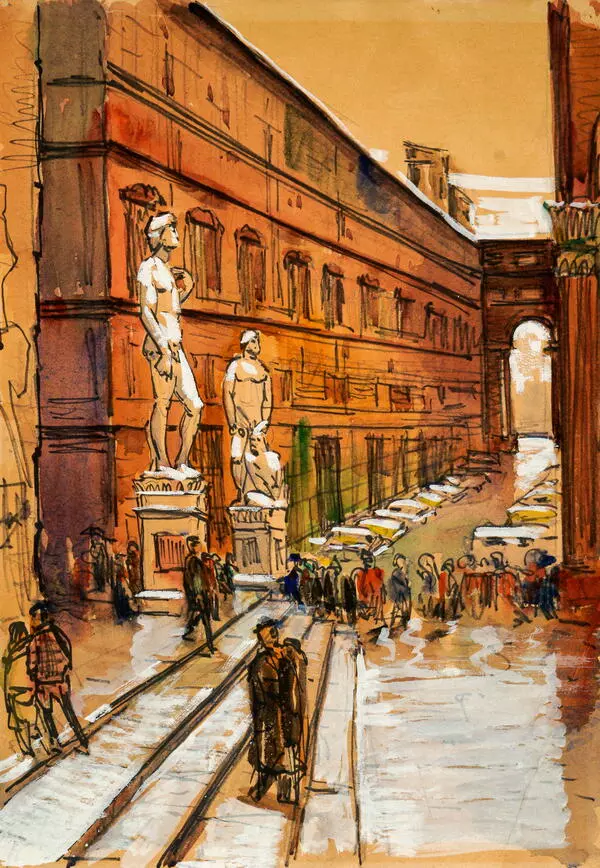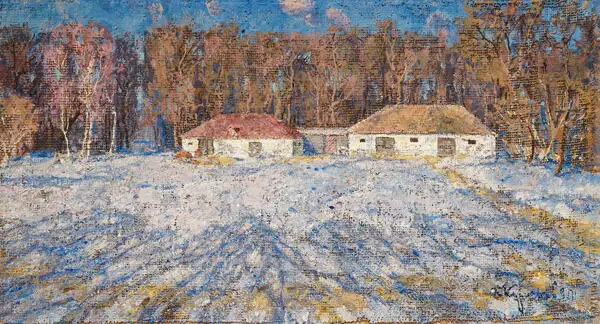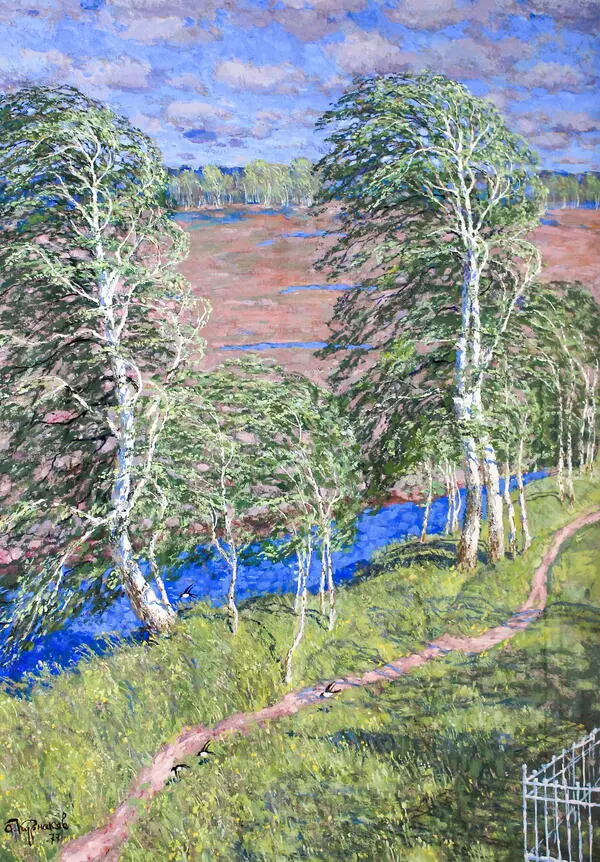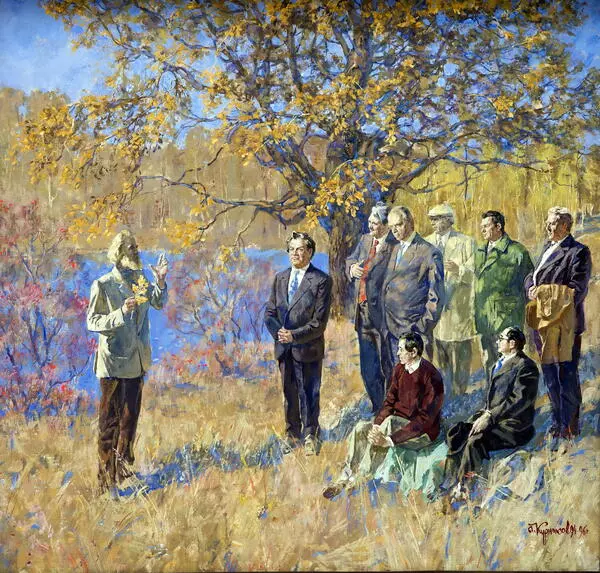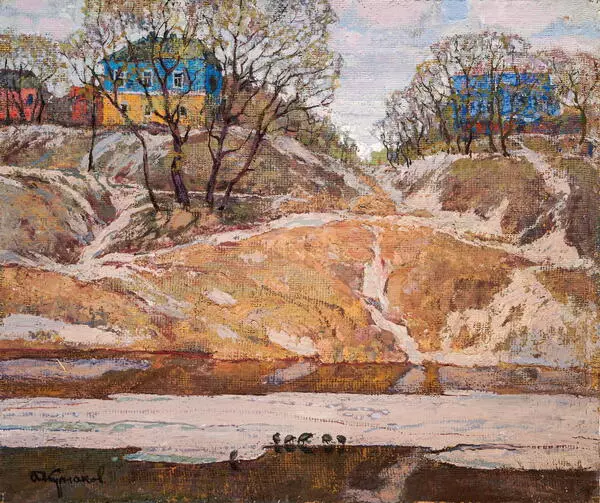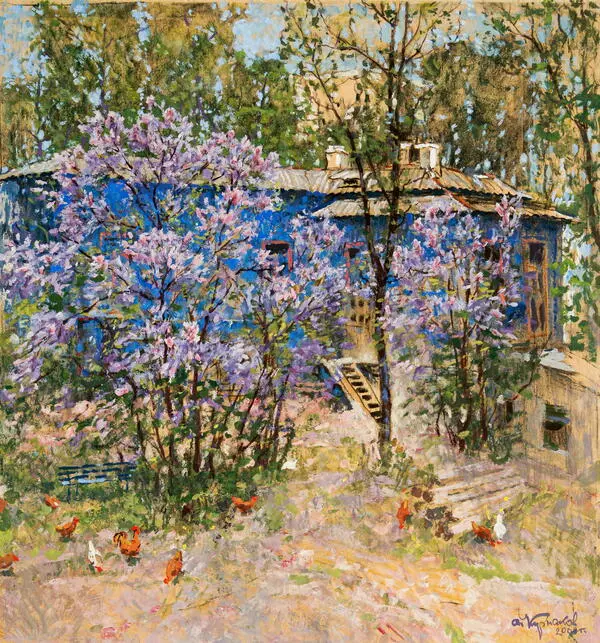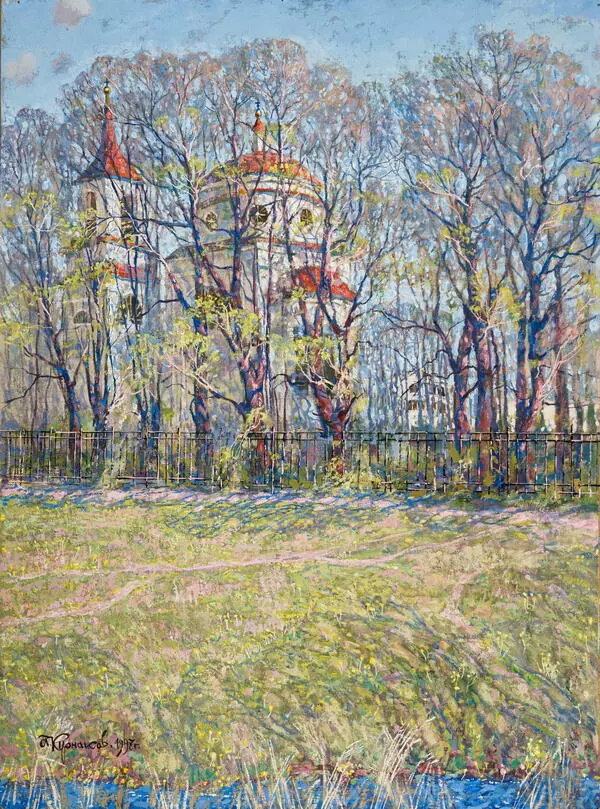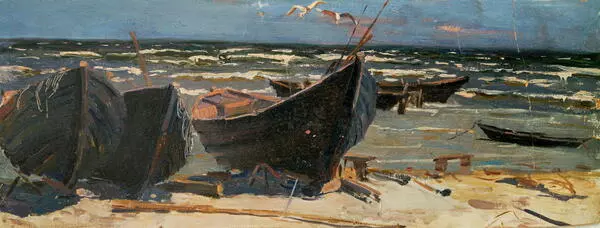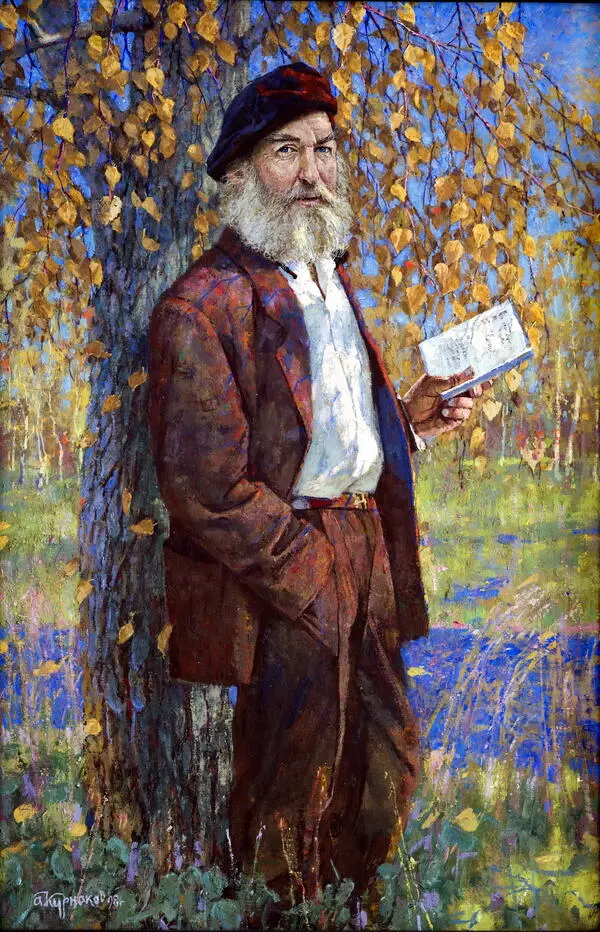The painting on display, created by Andrey Ilyich Kurnakov, depicts a panoramic view of the French city of Orléans. The several trees in the foreground, symbolizing the famous Forest of Orléans, overlook the city. Orléans originated before the common era but was destroyed by Julius Caesar. In 275, it was rebuilt by the Roman emperor Aurelian, who named it after himself, and over time the name evolved into Orléans, adapted to the rules of the French language.
Orléans is located on the right bank of the Loire River. The opposite side of the river opens a stunning view of the spires of the city’s cathedrals and ancient churches, as well as the red terrace roofs of its small houses.
The architecture of Orléans has undergone many changes due to the great number of different cataclysms that happened there. The art of Romanticism even had scenes that depicted “disasters of the city of Orléans”. Each catastrophe — the Hundred Years’ War, fires, religious clashes — left Orléans in ruins, and once rebuilt, the city always had a different look. World War II was especially devastating — many important architectural monuments were destroyed by the Germans and are irrevocably lost now.
The foreground of Kurnakov’s painting titled “Orléans. France” depicts a magnificent bridge that divides the city into two parts. The massive arched masonry bridge on thick and wide supports was designed in the 18th century by the architect Jean Hupeau at the request of George V, who wished to walk every evening from one end of Orléans to the other without having to cross the river. Initially called Pont Royal, it was later named in honor of the sovereign.
In this Kurnakov’s landscape, the focus is on the Cathédrale Sainte-Croix (Cathedral of the Holy Cross) towering over the entire city. Its design in the Gothic style of Flamboyant makes the building similar to the Cathedral of Notre Dame. The spires of catholic churches stretch towards the sky; the painting also shows some town hall towers. The artist does not outline the details of the landscape and only hints at them with small strokes of dark gray, reddish, pinkish-ocher, brown, beige, and burgundy. They seem enough to picture a whole variety of architectural sights.
Kurnakov renders about a dozen picturesque parks of Orléans with small-scale pale-orange specks. The warm colors of the city extended throughout the canvas are emphasized by the bright, sunny autumn sky.
Orléans is located on the right bank of the Loire River. The opposite side of the river opens a stunning view of the spires of the city’s cathedrals and ancient churches, as well as the red terrace roofs of its small houses.
The architecture of Orléans has undergone many changes due to the great number of different cataclysms that happened there. The art of Romanticism even had scenes that depicted “disasters of the city of Orléans”. Each catastrophe — the Hundred Years’ War, fires, religious clashes — left Orléans in ruins, and once rebuilt, the city always had a different look. World War II was especially devastating — many important architectural monuments were destroyed by the Germans and are irrevocably lost now.
The foreground of Kurnakov’s painting titled “Orléans. France” depicts a magnificent bridge that divides the city into two parts. The massive arched masonry bridge on thick and wide supports was designed in the 18th century by the architect Jean Hupeau at the request of George V, who wished to walk every evening from one end of Orléans to the other without having to cross the river. Initially called Pont Royal, it was later named in honor of the sovereign.
In this Kurnakov’s landscape, the focus is on the Cathédrale Sainte-Croix (Cathedral of the Holy Cross) towering over the entire city. Its design in the Gothic style of Flamboyant makes the building similar to the Cathedral of Notre Dame. The spires of catholic churches stretch towards the sky; the painting also shows some town hall towers. The artist does not outline the details of the landscape and only hints at them with small strokes of dark gray, reddish, pinkish-ocher, brown, beige, and burgundy. They seem enough to picture a whole variety of architectural sights.
Kurnakov renders about a dozen picturesque parks of Orléans with small-scale pale-orange specks. The warm colors of the city extended throughout the canvas are emphasized by the bright, sunny autumn sky.


